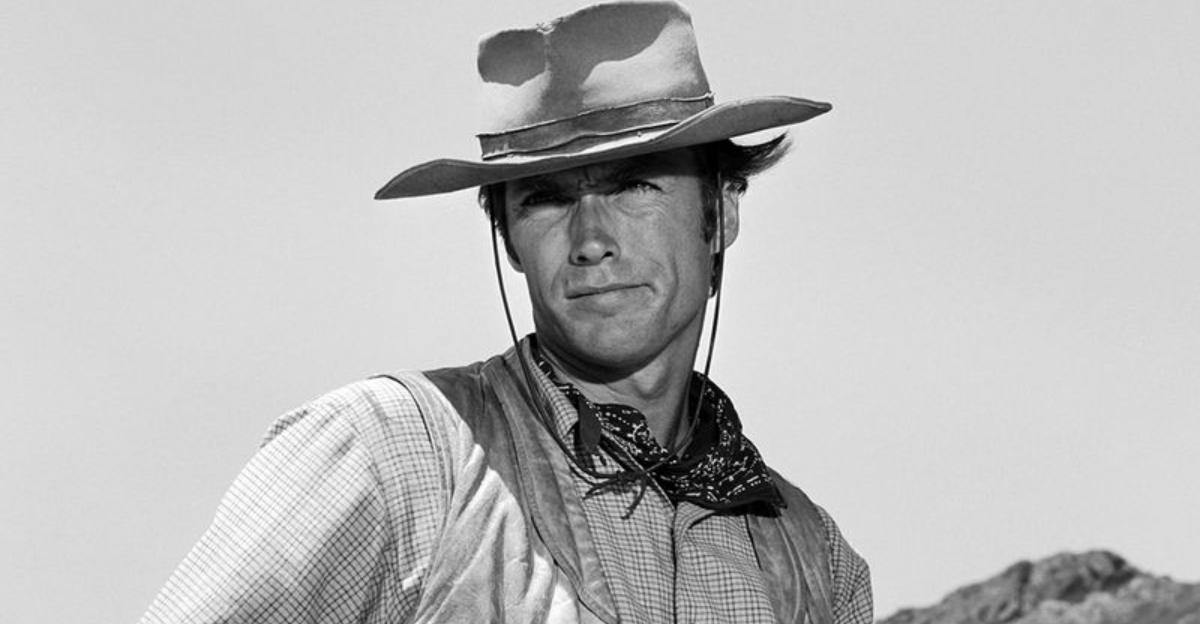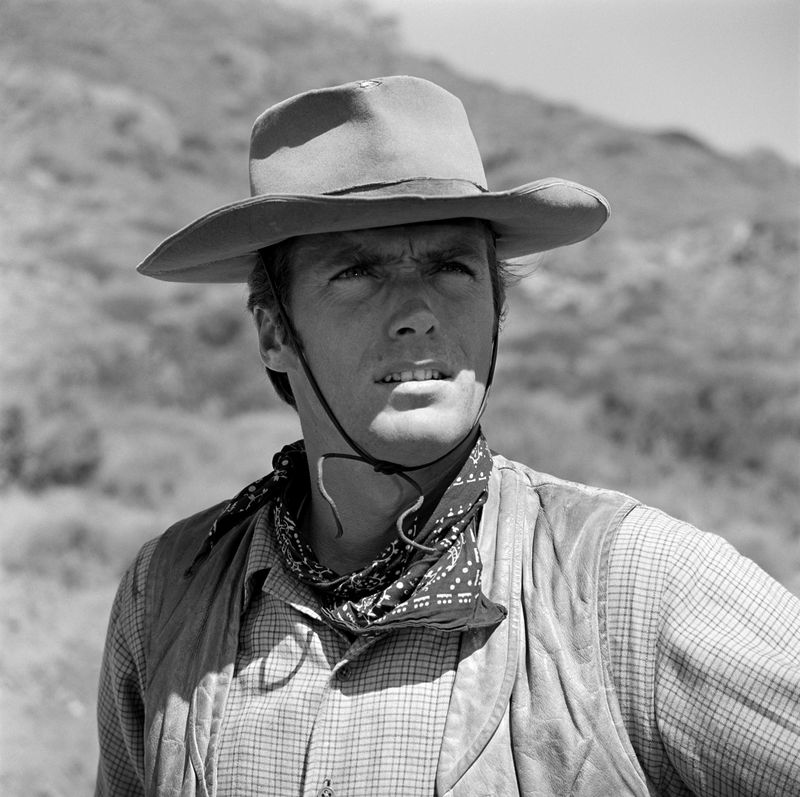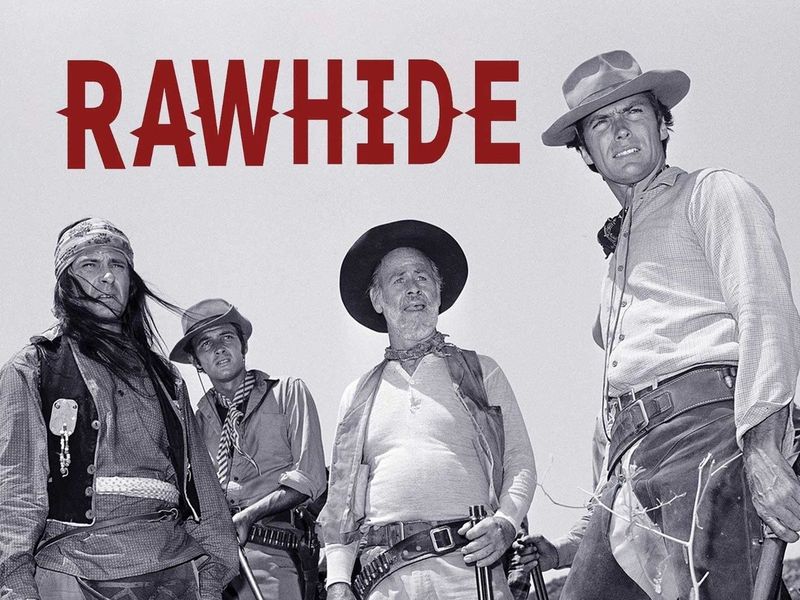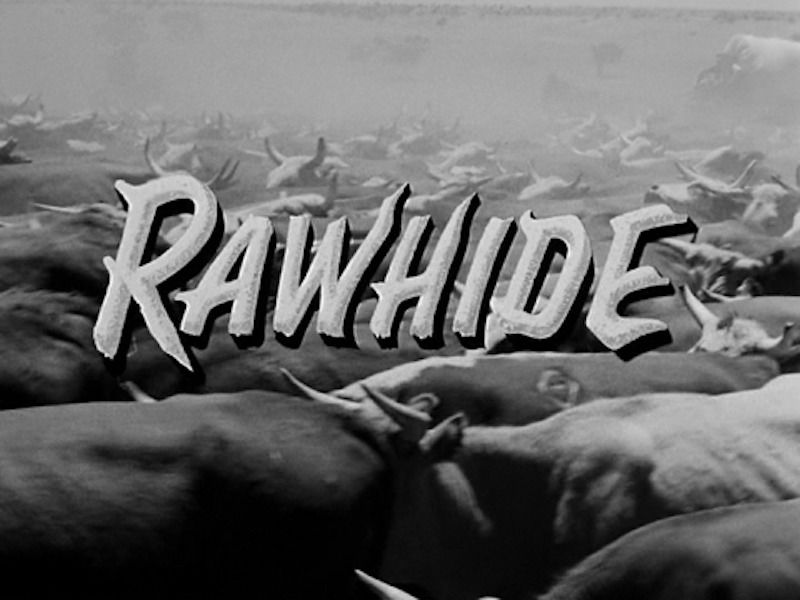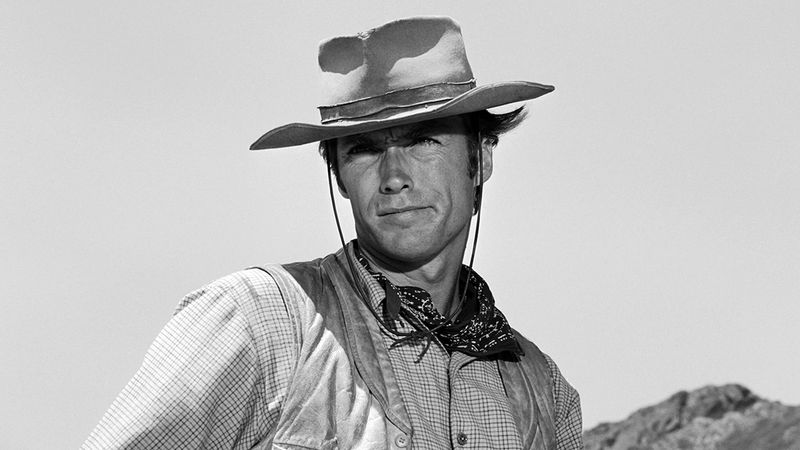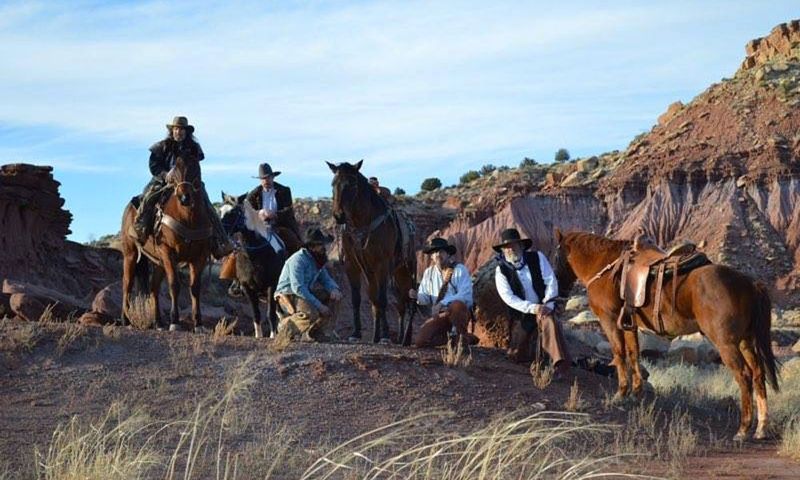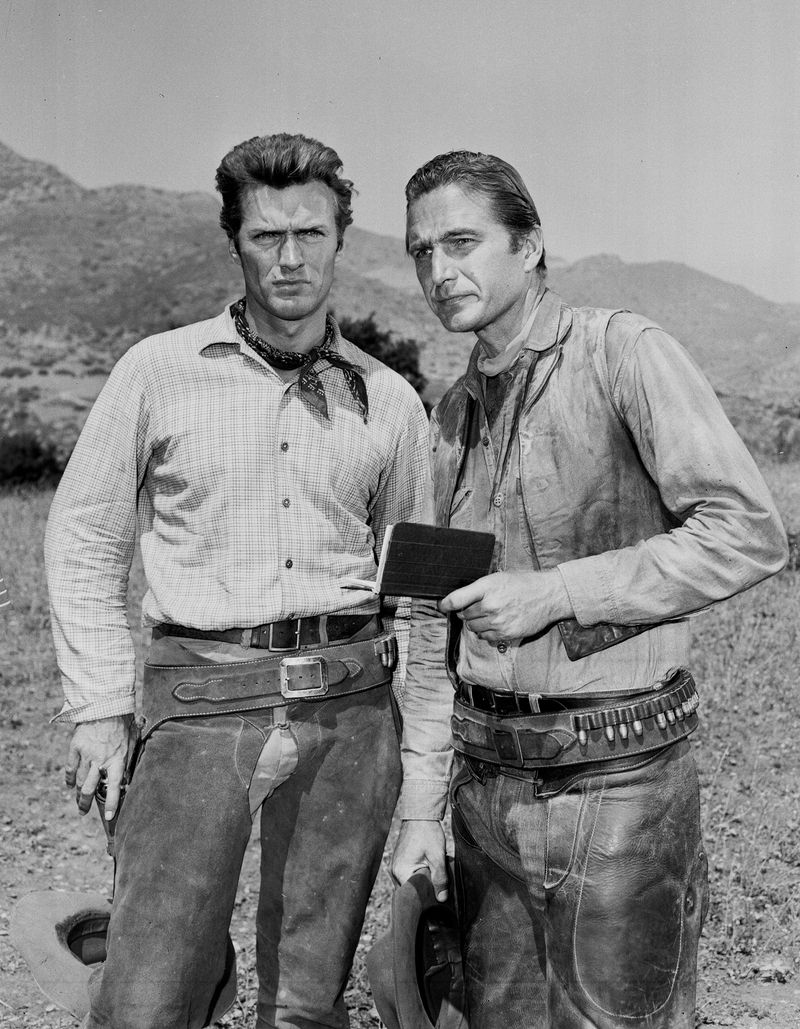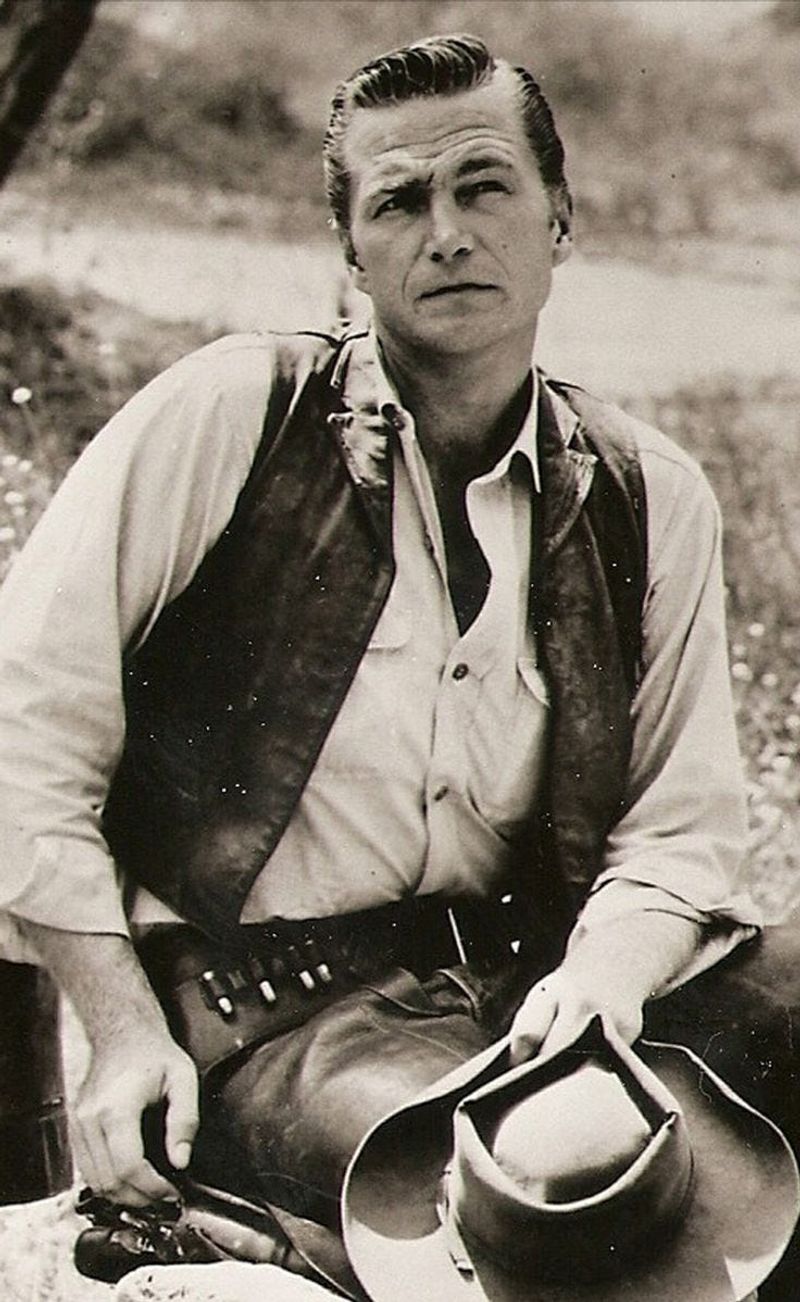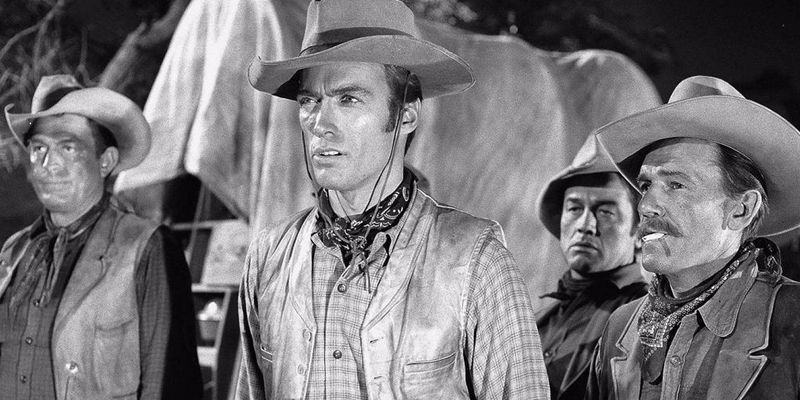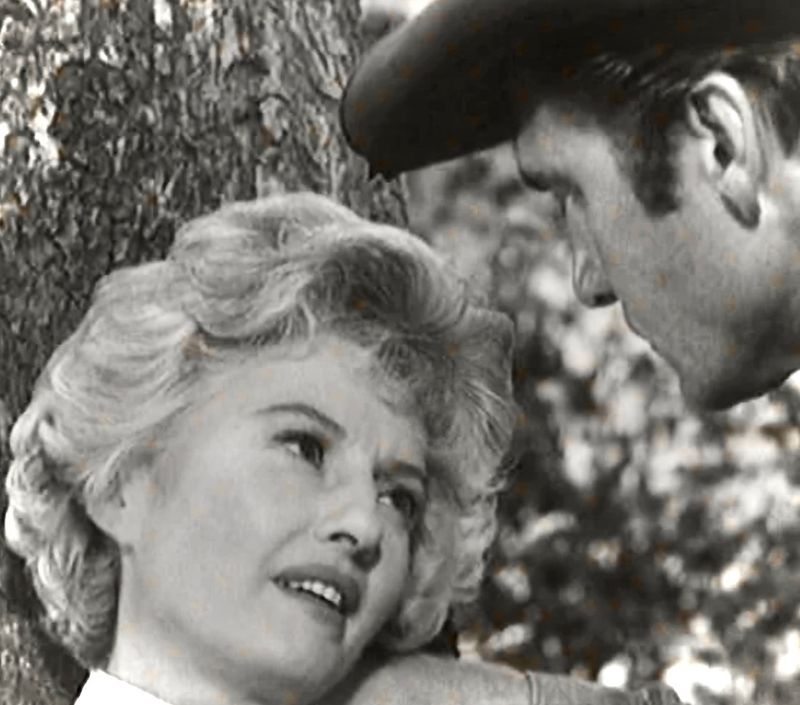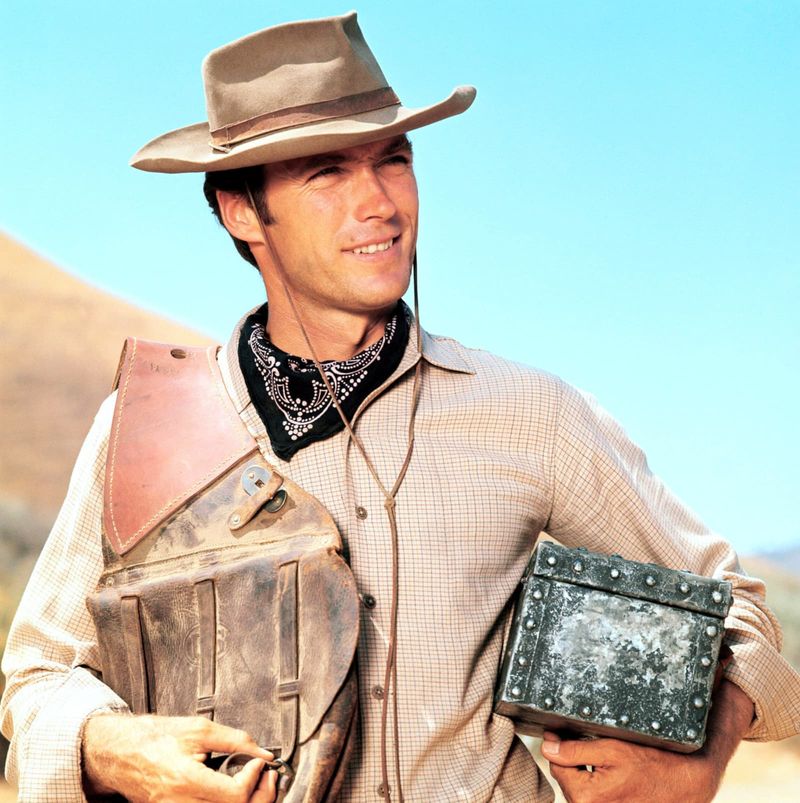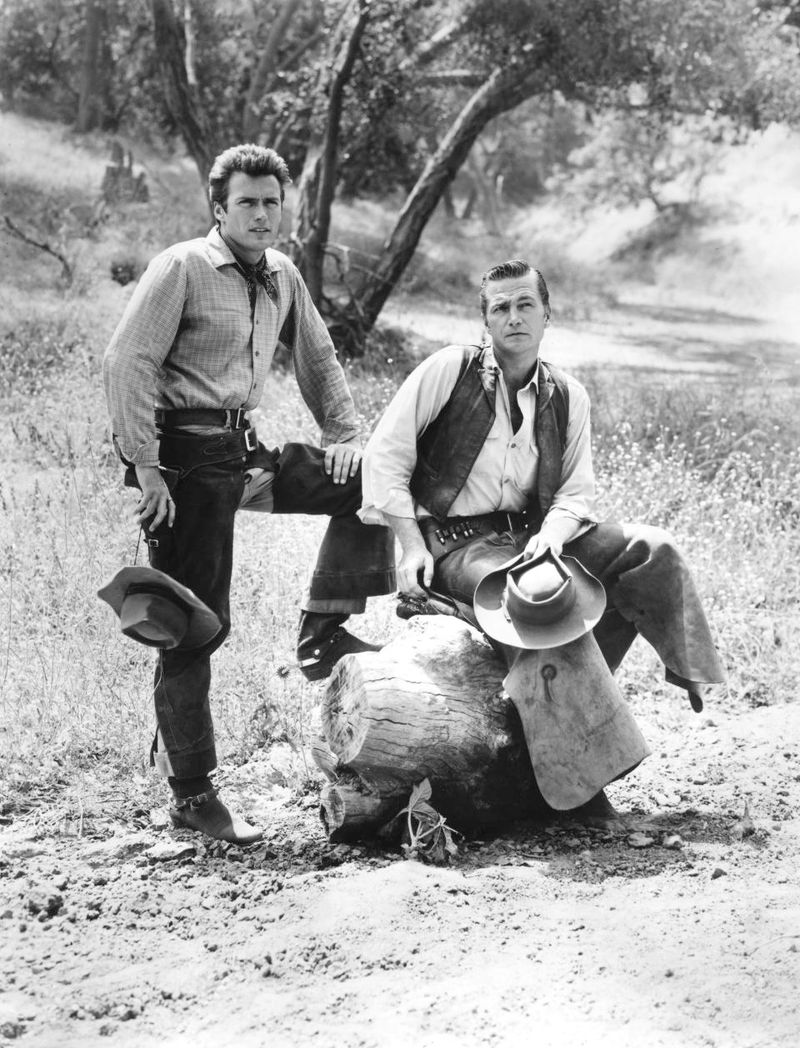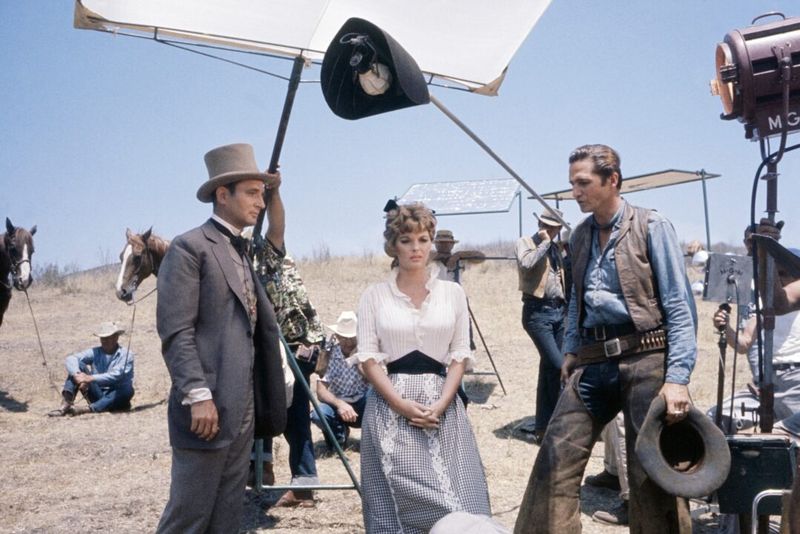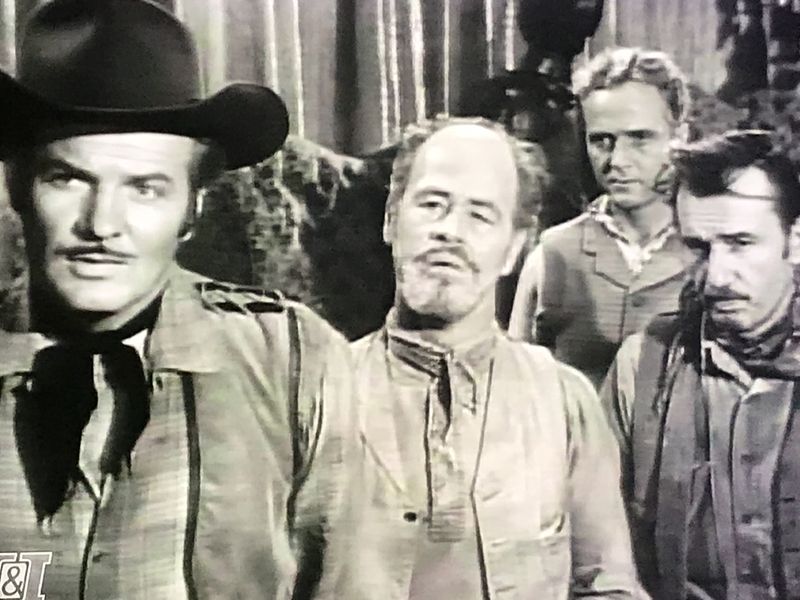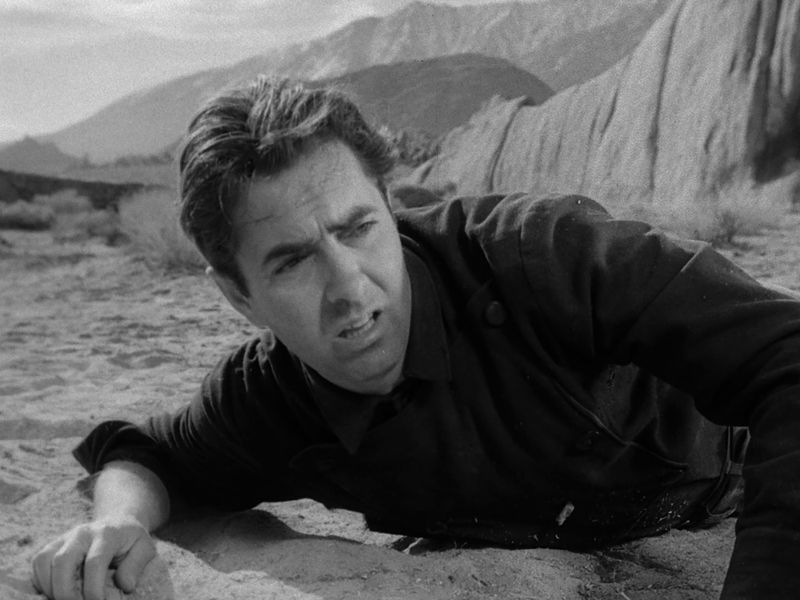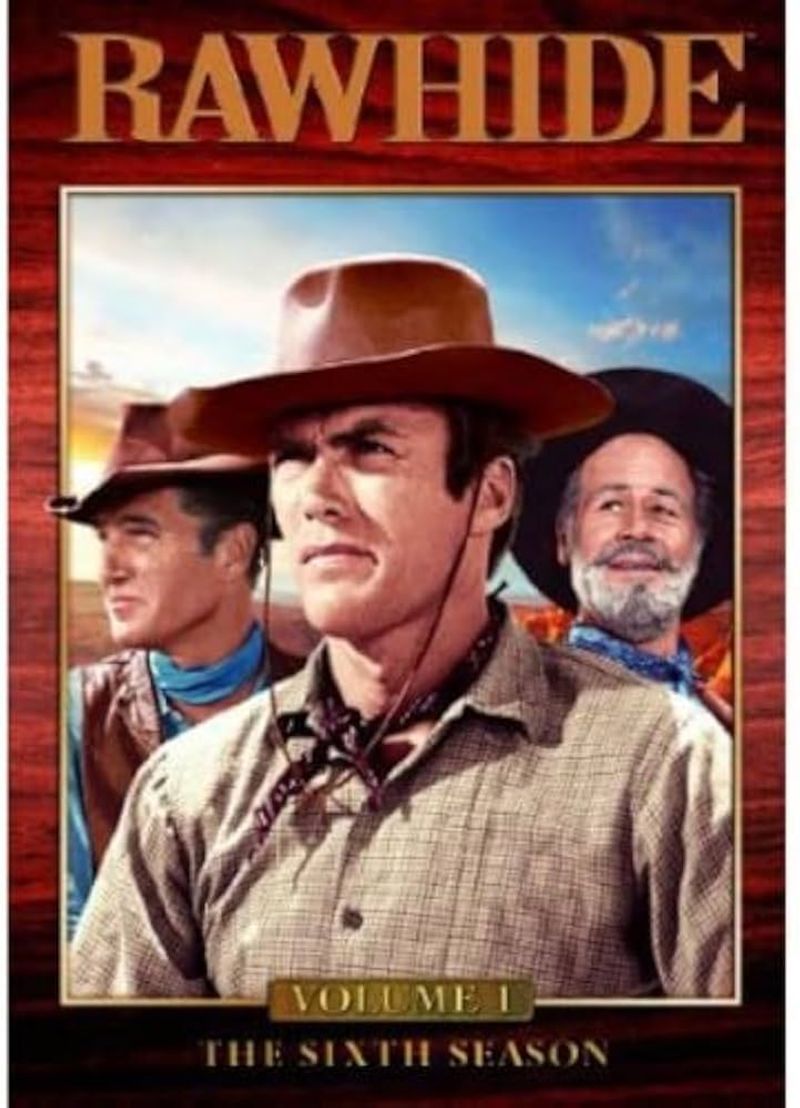Explore the untamed world of Rawhide, the iconic TV western that brought cowboys and cattle drives into living rooms across America.
From Clint Eastwood’s breakout role to its influence on later westerns, Rawhide left a lasting mark on television history.
1. Clint Eastwood’s Breakout Role
In the bustling world of 1950s television, a young actor by the name of Clint Eastwood saddled up for a role that would change his life forever. Playing Rowdy Yates, Eastwood’s character was a hot-headed yet fiercely loyal ramrod under the guidance of trail boss Gil Favor.
This role transformed Eastwood from just another actor into a household name, paving the way for his legendary career in film. The dynamic between Yates and Favor was a central element of the show, offering a mix of tension and camaraderie that kept viewers glued to their screens.
2. It Ran for Eight Seasons
Spanning an impressive eight seasons, Rawhide aired from 1959 to 1965, cementing itself as one of the longest-running TV westerns of its era. Over these years, the series produced a remarkable 217 episodes, each filled with drama and adventure on the open trail.
The show’s longevity can be attributed to its engaging storylines and authentic depiction of the rugged life of cattle drives. With each episode, audiences were transported to the dusty trails and wide-open spaces that defined the American West, making it a cherished series for many.
3. “Head ‘em up! Move ‘em out!”
When you think of Rawhide, one phrase likely springs to mind: “Head ’em up! Move ’em out!” This iconic catchphrase, belted out in the show’s unforgettable theme song, became ingrained in pop culture.
Written by the legendary Dimitri Tiomkin, the theme set the tone for each episode, energizing fans with its catchy rhythm and bold lyrics.
The phrase perfectly encapsulated the spirit of adventure and the relentless forward march of the cattle drive, capturing the hearts of audiences and leaving an indelible mark on television history.
4. Theme Song by a Legend
The music that opened each episode of Rawhide was more than just a tune; it was an anthem of the American West. Composed by Dimitri Tiomkin, with lyrics by Ned Washington, the theme song became one of the most recognized in western TV history.
Its lively melody and evocative lyrics captured the essence of the show, setting the scene for tales of rugged cowboys and daring cattle drives. Tiomkin’s composition became synonymous with Rawhide, continuing to echo in the ears of fans long after the series concluded.
5. Realistic Cattle Drives
Rawhide prided itself on authenticity, striving to portray the grit and challenge of real cattle drives. The series often incorporated real cattle and outdoor locations, filming under challenging weather conditions to capture the true essence of the frontier.
This commitment to realism allowed viewers to experience the dust, sweat, and toil of driving herds across vast expanses. The show’s dedication to accurately depicting life on the range set it apart from other westerns, offering an immersive glimpse into the hard-bitten world of cowboys.
6. Eric Fleming: The Original Lead
Before Clint Eastwood became a western icon, it was Eric Fleming who led the charge as Gil Favor, the steadfast trail boss guiding his crew through treacherous territory. Fleming’s portrayal of Favor brought depth and gravitas to the series, making him the central figure during Rawhide’s prime years.
His character embodied the leadership and resilience necessary to thrive in the unforgiving world of cattle drives. While Eastwood may have stolen the spotlight in later years, Fleming’s role as the original lead remains a pivotal part of the show’s legacy.
7. Tragic End for Eric Fleming
The story of Eric Fleming, Rawhide’s original leading man, ended in tragedy. Shortly after leaving the series to pursue a film career, Fleming’s life was cut short in a canoeing accident in Peru in 1966.
His untimely death shocked fans and cast a shadow over the legacy of the show. Fleming’s ambition to transition from television to film showcased his dedication to his craft, and his passing left a void in the entertainment world.
Despite his tragic end, Fleming’s contribution to Rawhide and his portrayal of Gil Favor continue to be remembered fondly.
8. Clint Eastwood Almost Quit Acting
Clint Eastwood, despite his success on Rawhide, found himself at a career crossroads. Frustrated with being typecast as a cowboy, he nearly walked away from acting altogether. However, destiny had other plans.
Eastwood’s decision to stick with his craft led him to the iconic “Spaghetti Westerns” directed by Sergio Leone, roles that would redefine his career.
This turning point not only solidified his place in cinematic history but also showcased his versatility and determination. Eastwood’s journey is a testament to perseverance and the unexpected paths life can take.
9. Guest Stars Galore
Rawhide was a treasure trove of Hollywood talent, featuring a dazzling array of guest stars throughout its run. Icons like Barbara Stanwyck, Burt Reynolds, and Charles Bronson graced the screen, bringing their star power to the western frontier.
These appearances not only added variety to the series but also provided a platform for rising stars to shine. The show’s ability to attract such a diverse and talented cast speaks to its popularity and influence within the industry, making each episode a unique and star-studded experience.
10. It Inspired Later Westerns
In the world of television westerns, Rawhide stood as a trailblazer, inspiring a wave of similar shows that followed in its dusty footsteps. Its success paved the way for beloved series like Bonanza and The Big Valley, influencing their storytelling and production styles.
Rawhide’s blend of adventure, drama, and authenticity set a new standard for the genre, leaving an indelible mark on the television landscape. As a pioneer in western storytelling, its legacy is reflected in the countless shows that sought to capture the spirit of the open range.
11. Critics Loved the Cinematography
For a TV series of its time, Rawhide’s cinematography was a standout feature. Critics praised its dynamic camera work and breathtaking location shots, often filmed in the picturesque landscapes of California and Arizona.
These visual elements added a cinematic quality to the series, drawing viewers into the vast and rugged beauty of the frontier. The show’s commitment to high-quality production values set it apart from other westerns, earning accolades and contributing to its enduring popularity.
This attention to visual storytelling helped cement Rawhide’s place in television history.
12. Clint Eastwood Directed an Episode
In a career-defining moment, Clint Eastwood stepped behind the camera to direct an episode of Rawhide. This opportunity marked the beginning of his journey as a director, a role in which he would later achieve great acclaim.
Eastwood’s directorial debut on the series allowed him to explore his creative vision and hone his skills, laying the groundwork for a future in Hollywood’s director’s chair.
This experience not only enriched his career but also added a new dimension to his involvement with Rawhide, showcasing his multifaceted talents.
13. The Show Was Historically Based
Rawhide wasn’t just about entertainment; it also had a foot in history. Many of its episodes were inspired by real-life cattle drives that traversed the challenging routes from Texas to Missouri.
This historical basis added depth and authenticity to the drama, offering viewers a glimpse into the arduous journeys faced by cowboys of the time.
The show’s commitment to reflecting true events provided an educational element, enriching the storytelling with a sense of realism and respect for the past, which resonated with audiences seeking more than just fiction.
14. It Had One of the First Western Villain Arcs
In a bold move for its time, Rawhide introduced one of the first recurring villain arcs in TV westerns. Unlike the typical black-and-white portrayals of good versus evil, the show dared to explore morally ambiguous characters and complex storylines.
These recurring villains added depth to the narrative, challenging the protagonists and engaging viewers with their unpredictable motives.
This innovative approach kept audiences on their toes, setting a precedent for future series to explore more nuanced character development and storytelling in the western genre.
15. Still a Cult Favorite
Decades after its final episode aired, Rawhide continues to hold a special place in the hearts of its fans. The show’s timeless appeal and engaging storytelling have allowed it to maintain a loyal following, making it a cult favorite among western enthusiasts.
Thanks to modern technology, Rawhide is readily available on DVD and streaming platforms, ensuring that new generations discover the rugged adventures of Rowdy Yates and Gil Favor.
Its enduring popularity is a testament to the show’s quality and the lasting impact it has made in the world of television.
